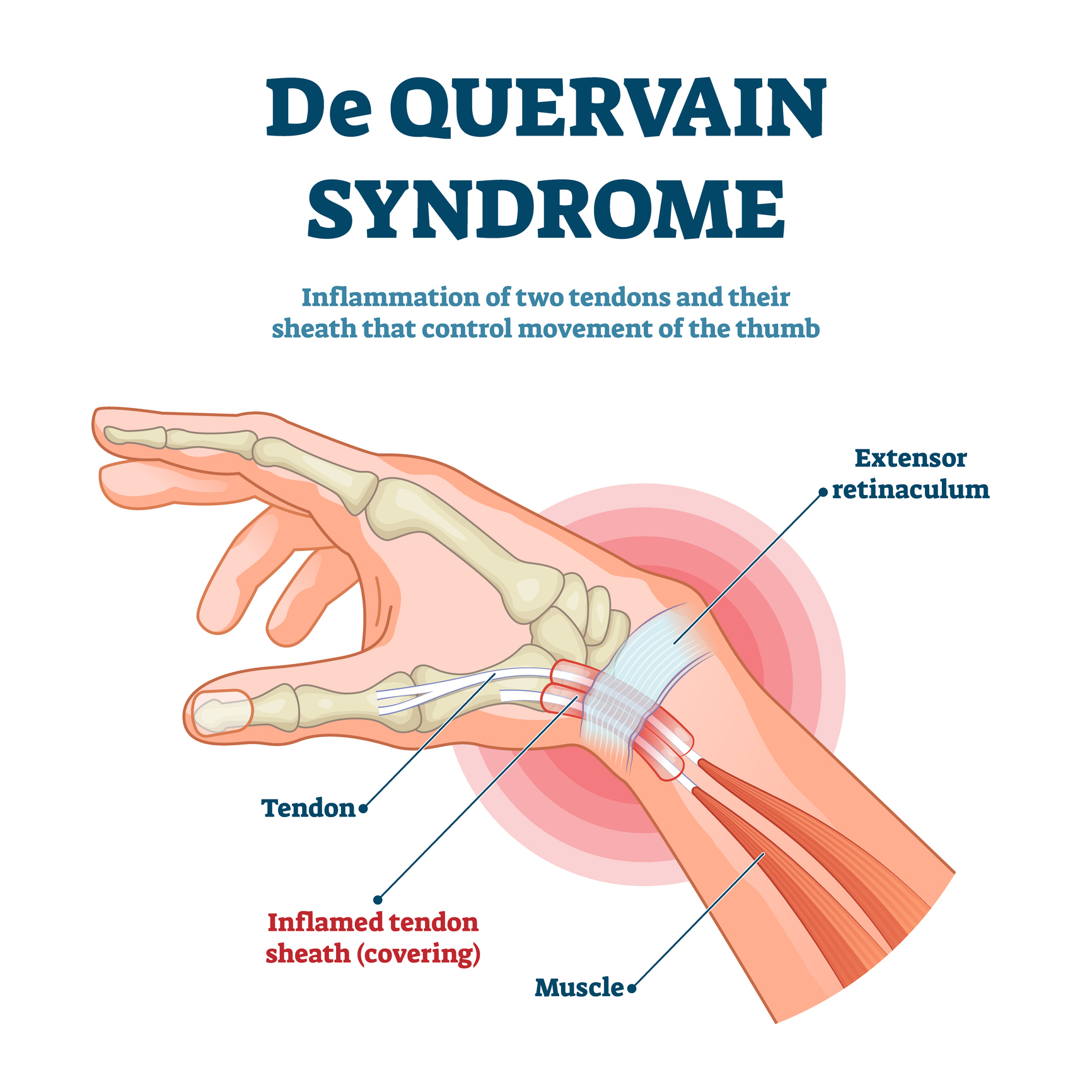What is De Quervain’s Release?
De Quervain’s Release is a surgical procedure aimed at treating De Quervain’s tenosynovitis, a condition characterized by inflammation of the tendons on the thumb side of the wrist. This inflammation can cause pain, swelling, and difficulty moving the thumb and wrist. De Quervain’s Release involves surgically opening the compartment where the affected tendons pass through the wrist, relieving pressure and allowing for smoother tendon movement.

Why Might You Need De Quervain’s Release?
De Quervain’s Release may be recommended if you experience:
- Thumb Pain: Pain at the base of the thumb, particularly when gripping or moving the wrist.
- Swelling: Swelling and tenderness along the thumb side of the wrist.
- Difficulty Gripping: Weakness or difficulty gripping objects due to thumb and wrist pain.
- Failed Conservative Treatments: Lack of improvement with non-surgical treatments such as splinting, medication, or steroid injections.
What Are the Steps in a De Quervain’s Release Procedure?
Preoperative Preparation
- Medical Evaluation: Comprehensive review of your medical history, symptoms, and response to previous treatments.
- Physical Examination: Assessment of thumb and wrist function, range of motion, and tenderness.
- Informed Consent: Detailed discussion of the procedure, potential benefits, and risks.
During the Procedure
- Patient Positioning: You will be comfortably positioned to allow easy access to the affected wrist.
- Anesthesia: Local anesthesia is typically administered to numb the wrist and hand.
- Incision: A small incision is made over the affected tendons on the thumb side of the wrist.
- Release: The surgeon carefully opens the tendon sheath, relieving pressure on the inflamed tendons.
- Closure: The incision is closed with sutures, and a sterile dressing is applied.
Postoperative Care
- Observation: Brief period of monitoring after the procedure to ensure there are no immediate complications.
- Immobilization: Splinting or bracing may be used to support the wrist and promote healing.
- Pain Management: Medications and techniques for managing postoperative pain and swelling.
- Hand Therapy: Rehabilitation exercises and hand therapy may be prescribed to improve wrist and thumb strength and range of motion.

Recovery and Rehabilitation
Postoperative Care
- Activity Guidelines: Instructions on caring for the incision and guidelines for gradually resuming normal activities.
- Follow-Up Appointments: Scheduled to monitor healing, remove sutures, and assess wrist and thumb function.
Potential Complications
While De Quervain’s Release is generally safe, potential complications can include:
- Infection: Risk of infection at the surgical site.
- Nerve or Vascular Injury: Rare but possible risk of injury to nearby nerves or blood vessels.
- Recurrence: Possibility of De Quervain’s tenosynovitis returning, particularly with overuse or repetitive activities.
Benefits of De Quervain’s Release in
Hand & Upper Extremity Management
- Pain Relief: Reduction in thumb and wrist pain, allowing for improved hand function.
- Improved Mobility: Restoration of thumb and wrist movement, facilitating daily activities.
- Prevention of Complications: Addressing inflammation and reducing the risk of further tendon damage.
- Enhanced Quality of Life: Improved overall well-being and ability to engage in work and leisure activities without thumb and wrist discomfort.
Find a Hand Surgeon
Hand & Upper Extremity
Genesys Surgery CenterLivoniaView all
Hand & Upper Extremity
Genesys Surgery CenterLivoniaView all


